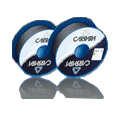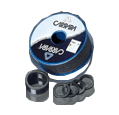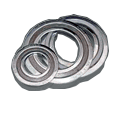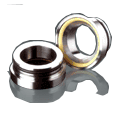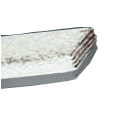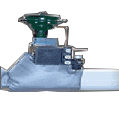Unsure Which Gasket Material Is Right for You?
Material selection is basically everything when it comes to replacing a gasket. In fact, with just about anything, the material used is the most important part – think about how uncomfortable your couch would be if it were made out of plastic, or how sluggish your car would be if it were made from concrete. The same idea applies for gaskets: the correct gasket material depends on the specific use for your gasket. We’ll take a look at the different gasket materials below and give you some helpful tips on choosing the right one.
Gaskets come in many different materials
Gaskets can be made out of a range of different materials like rubber, graphite, metal, PTFE, paper, millboard and more. They all have very different qualities and are suitable for different purposes. Here are some tips on figuring out which gasket material is right for you.
Metallic gaskets
Metallic gaskets are best for extremely high-pressure applications, wedging tightly as soon as the two components come into contact. They can either have ovular or octagonal cross-sections; octagonal cross-sections are particularly effective in high pressure situations, handling up to 20,000 psi. Metallic gaskets are used in oil and gas industrial systems.
Rubber
Rubber gaskets come in many different grades, so they’re able to be used in various applications. They’re good for applications that vary in environmental and operating conditions. Rubber has good compression properties, and synthetic rubber is usually ideal for withstanding extreme weather conditions.
Polytetrafluoroethylene (PTFE)
PTFE is a soft gasket material which is best in relatively low pressure environments. PTFE comes with numerous benefits, including superior corrosion resistance, long shelf life and a wide range of temperature capability starting at -200 degrees Celsius and finishing at 260 degrees Celsius.
Graphite
Flexible graphite has the ideal properties for a variety of fluid sealing applications. Like PTFE, it’s chemical-resistant and can be used for applications that involve corrosive substances. It’s also a heat-resistant material, making it ideal for high-temperature and high-pressure environments. It can withstand temperatures of up to 600 degrees Celsius.
Paper
Paper gaskets (which, despite the name, are usually made from cork, nitrile or silicon rubber) are a cost-effective and fast solution for making leak-proof seals. They’re particularly resistant against oil, water and petrol.
We hope that you’ve got a clearer understanding of which gasket material is best for you, so contact the team at Steamline Engineering to invest in some of the best quality gaskets that Australia has to offer. Made from a range of materials like metal, graphite, PTFE and millboard, Steamline’s gaskets are high quality and competitively priced. Get in touch with Steamline Engineering to learn more about their range of industrial products.


